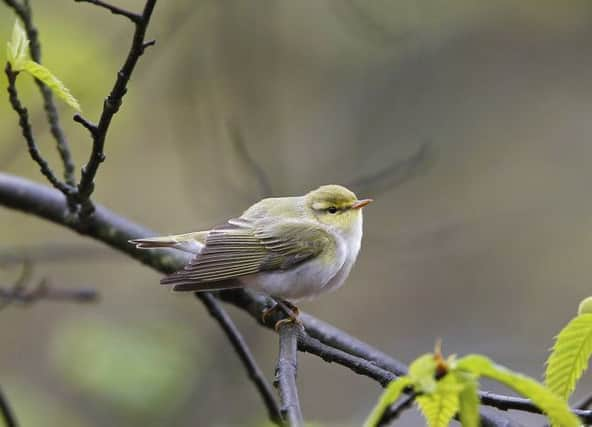Blue tits make a welcome return to Bedfordshire Birdwatch shows


In Bedfordshire, it’s all change in the top ten with blue tits moving back into the top three after dropping down the league table in 2013.
The previous occupier of the second spot, blackbirds, have dropped to number four.
Advertisement
Hide AdAdvertisement
Hide AdGoldfinches have climbed another two places since last year, and now perch at number six.
The robin, which has been as high as number eight in the past ten years, has dropped back to number ten.
Scientists believe that the weather has played a role in the ups and downs in this year’s top ten as many of the birds were recorded in lower numbers in gardens due to the mild conditions. Some species, such as blue tits, were likely to be more reliant on food provided in gardens than others, such as blackbirds, which could easily find their favoured foods like worms and insects in the countryside.
Just ten years ago, goldfinches were in 14th position nationally, but scientists believe that the increase in people providing food like nyjer seed and sunflower hearts in gardens, may have contributed to their steady rise to number six.
Advertisement
Hide AdAdvertisement
Hide AdOverall numbers of species such as blackbirds, fieldfares and redwings may appear to have dropped in our gardens since last year, but in many cases this is not because these populations are in decline but because these species don’t need to come into our gardens during mild winters due to there being plenty of natural food available in the wider countryside.
However the continuing declines of some species are of greater concern. Numbers of starlings and song thrushes have dropped by an alarming 84 and 81 per cent respectively since the Birdwatch began in 1979. Both species are on the UK ‘red list’ meaning they are of the highest conservation concern.
There is slightly better news for the house sparrow, as the declines appear to have slowed, and it remains the most commonly seen bird in our gardens. However, it remains on the red list as we have still lost 62% since 1979.
Rachael Murray, speaking for the RSPB in the East, says: “2014 was always going to be an interesting Big Garden Birdwatch as the winter has been so mild, and we wondered if it would have a significant impact on garden birds.
Advertisement
Hide AdAdvertisement
Hide Ad“They were out and about in the wider countryside finding natural food instead of taking up our hospitality. The good news is that this may mean we have more birds in our gardens in the coming breeding season because more survived the mild winter. It is a great time to give nature a home by putting up a nesting box and supplementary feeding”
Martin Harper, RSPB Conservation Director says: “Many garden birds rely on us humans for help. During winter, birds need extra food and water, and at other times of the year, as well as sustenance, a safe place to shelter and make their home can really give them a boost.
“Two of the species that moved up the rankings this year, blue tits and goldfinches, are adaptable, friendly garden birds and great examples of birds that can flourish with our help. If we put up a nestbox, leave out some food or let our gardens grow a bit wild they’ll be among the first to take advantage.”
This year, for the first time, participants were also asked to log some of the other wildlife they see in their gardens.
Advertisement
Hide AdAdvertisement
Hide AdThe RSPB asked whether people ever see deer, squirrels, badgers, hedgehogs frogs and toads in their gardens, to help build an overall picture of how important our gardens are for giving all types of wildlife a home.
This information will be analysed and results will be revealed next month.
The Big Schools’ Birdwatch is part of the Big Garden Birdwatch. The UK-wide survey of birds in schools has revealed that the blackbird is the most common playground visitor for the sixth year in a row. 85% of schools that took part in the survey in the Big Schools Birdwatch saw blackbirds, with an average of five birds seen per school, slightly down on 2013 figures.
Giving Nature a Home is the RSPB’s latest campaign, aimed at tackling the housing crisis facing the UK’s threatened wildlife. The charity is asking people to provide a place for wildlife in their own gardens and outside spaces – whether it by planting pollen-rich plants to attract bees and butterflies, putting up a nestbox for a house sparrow, or creating a pond that will support a number of different species.
The RSPB hopes to inspire people across the UK to create a million new homes for nature.
To find out how you can give nature a home where you live visit rspb.org.uk/homes